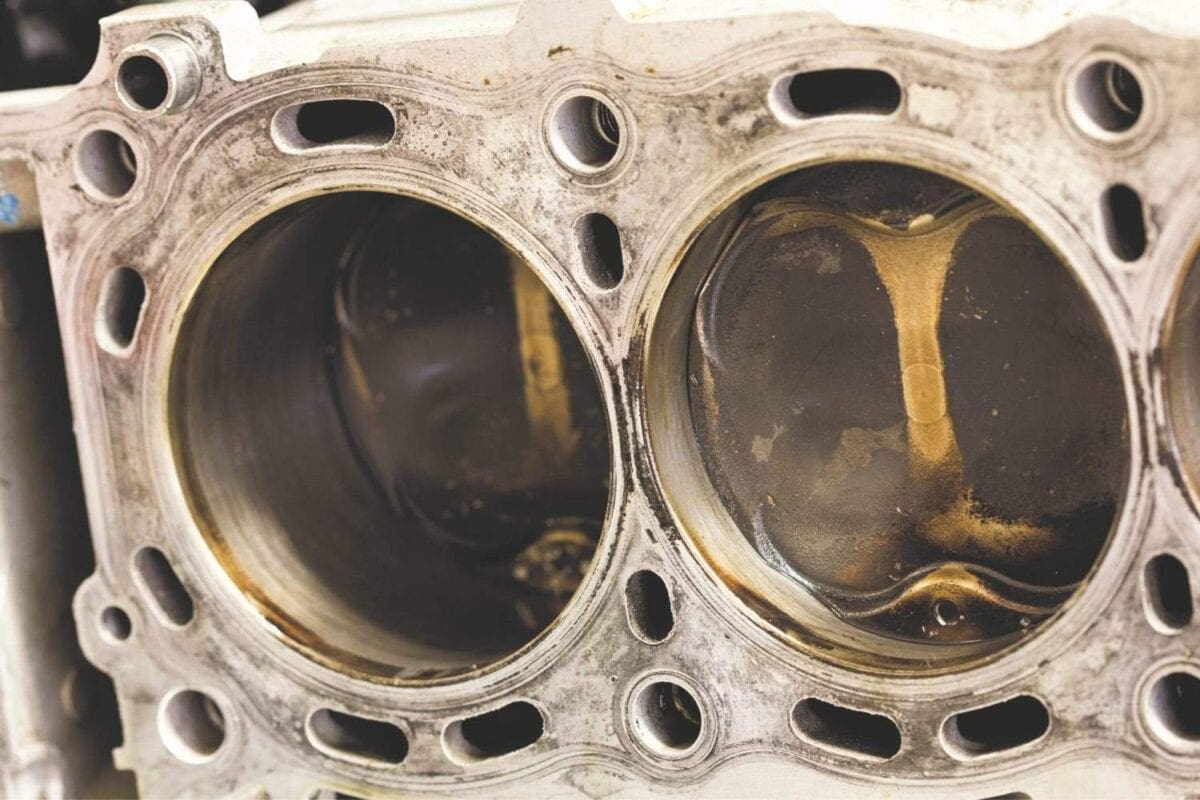There’s a lot of concern right now about the quality of our bike’s life blood. Motor Cycle Monthly’s chemistry class gives you the facts…
You put petrol in your bike and it burns it – that’s all you need to know, right? In an ideal world, yes, but as MCM’s sister magazine, Classic Motorcycle Mechanics recently reported, the 5% Ethanol content of fuels could be causing all kinds of problems.
Basically, Ethanol is a renewable fuel made from corn with a very high Research Octane Number (RON) that’s popular in some US racing classes. Because it’s renewable, Governments around the world are bringing in legislation that it should be mixed with our petrol. Sounds great, but besides being suspected of causing blood cancer, it’s also highly corrosive.
Ethanol is the stuff that gets you drunk. It reacts with oxygen to produce acetic acid, and unlike most of the chemicals in your fuel, it’s also hygroscopic, which means it loves to absorb water. If left, it can become saturated with water, which then starts to corrode your fuel system (including that nice big steel fuel tank). It get worse the older your bike is: it’s vicious stuff when it comes to fibreglass tanks (it eats the lining), it nibbles away at aluminium, and it perishes rubber pipes, diaphragms and O-rings.
Currently, while not all fuel suppliers are happy to give out the ingredients of their products, most of their juices are now at the 5% mixture. We were due to see E10 (a 10% Ethanol mix) on the forecourts alongside regular fuels by now, but the government has asked suppliers to delay the introduction after research showed the problems faced by owners of older vehicles. We know that vehicles can be designed to run on the new fuel, and BMW issued this statement back in 2007: “BMW Motorrad has no objection to the use of Spark Ignition (SI) engine fuels containing up to a maximum of 10% ethanol, and imposes no warranty restrictions.” So while some manufacturers are ready, the average bikers like us with older machines may have to think carefully.

We spoke to Mark Brewin at BSD Performance (bsd.uk.com) – one of the UK’s top tuning and race development companies – to get his opinion: “You can’t sugar coat this: it’s a nightmare. I work on 30-35 GSX-R1000 engines every year, but the ones that come from the USA, where their fuel is really nasty, have valves caked in crap when I take them out. At the moment, the 5% Ethanol content over here is bearable, but only if you take precautions.
“It’s not such an issue with the sealed fuel-injection systems of modern bikes, but once you get back to carburettors, you’ve got to be careful. If your bike’s got carbs then you don’t want it laid up for more than a month. I had an older Fireblade in recently, and had to throw the carbs out, they were that gummed-up and corroded. Even injected bikes suffer – I’ve got one in today that’s been left for about a year and just won’t start.
“Besides the corrosive problems of Ethanol, your bike will often run lean (which means it’s not getting enough fuel in the air/fuel mixture squirted into the cylinders). A lean bike can, at best, run a little roughly, or not feel like it has as much go as it used to. At worst, it can melt. It’s not always a problem, but some bikes run quite lean out of the factory to meet emissions laws, so a leaner fuel can be more of an issue. It’s also worth being extra vigiliant on tuned bikes.
With Mark’s expert advice, here are the five things you should do to keep your bike running sweet:
1. Stick to the best fuels. Mark’s experience with stripping hundreds of motors every year is that the better the fuel, the less the damage. You’ll also get better economy from the 97 RON ‘Super’ unleadeds, but only after you’ve got used to them, and stopped giving it such a handful!
2. Use Silkolene Pro FST. If you do need to store your bike, Mark’s found that this additive can help. It’s also great for curing carb icing, as MCM’s editor found out with his old Honda Dominator. www.fuchslubricants.com/pro-fst
3. Drain it. Older bikes with carbs can be fairly easily drained of fuel, so empty the tank and run the bike until it’s dry. You can also spray a very fine oil mist into the tank to help keep the oxides off.
4. Check it. Keep a close eye on your fuel pipes, and regularly check they’re secure (Mark’s had Ducatis in with pipes falling off). How does your bike feel? If it’s not performing like it used to, get it checked by an expert. A session on a dyno isn’t just for those looking for more power – it’s also a great way to get the very best out of the fuel mixture.
5. Ride it! If you ever needed a good excuse to get out on your bike, this is it. Keeping the fuel moving through the system will prevent it getting a chance to saturate with water and gum up the injectors or needles.



